French Drains and Other Concrete Drainage
While we understand that drainage might not be the most visually appealing aspect of your property’s concrete enhancements, it undeniably holds paramount importance. Insufficient drainage in concrete projects can result in costly damage, including surface flooding and subsurface erosion.
At OKCrete, we approach the task of French drain installation with the utmost diligence, recognizing its significance in preserving the integrity of your concrete work. Our process involves precise measurements of drainage angles, consideration of slopes, and the application of our extensive expertise to determine the optimal water flow direction when your concrete is poured.
French Drain Explained: What It Is and How It Works
French drains are a crucial addition to any property, serving as a vital solution for managing excess water and preventing potential damage. These drainage systems effectively redirect surface water and groundwater away from structures, such as homes and buildings, ensuring that they remain dry and structurally sound.
By efficiently controlling water runoff, French drains help to prevent erosion, minimize the risk of basement flooding, and protect the integrity of foundations. They also enhance the overall landscape by preventing soggy, waterlogged areas, promoting healthy plant growth, and reducing the breeding grounds for pests like mosquitos.
In regions with heavy rainfall or poor soil drainage, French drains are indispensable tools for safeguarding property investments and maintaining a functional and aesthetically pleasing outdoor environment.
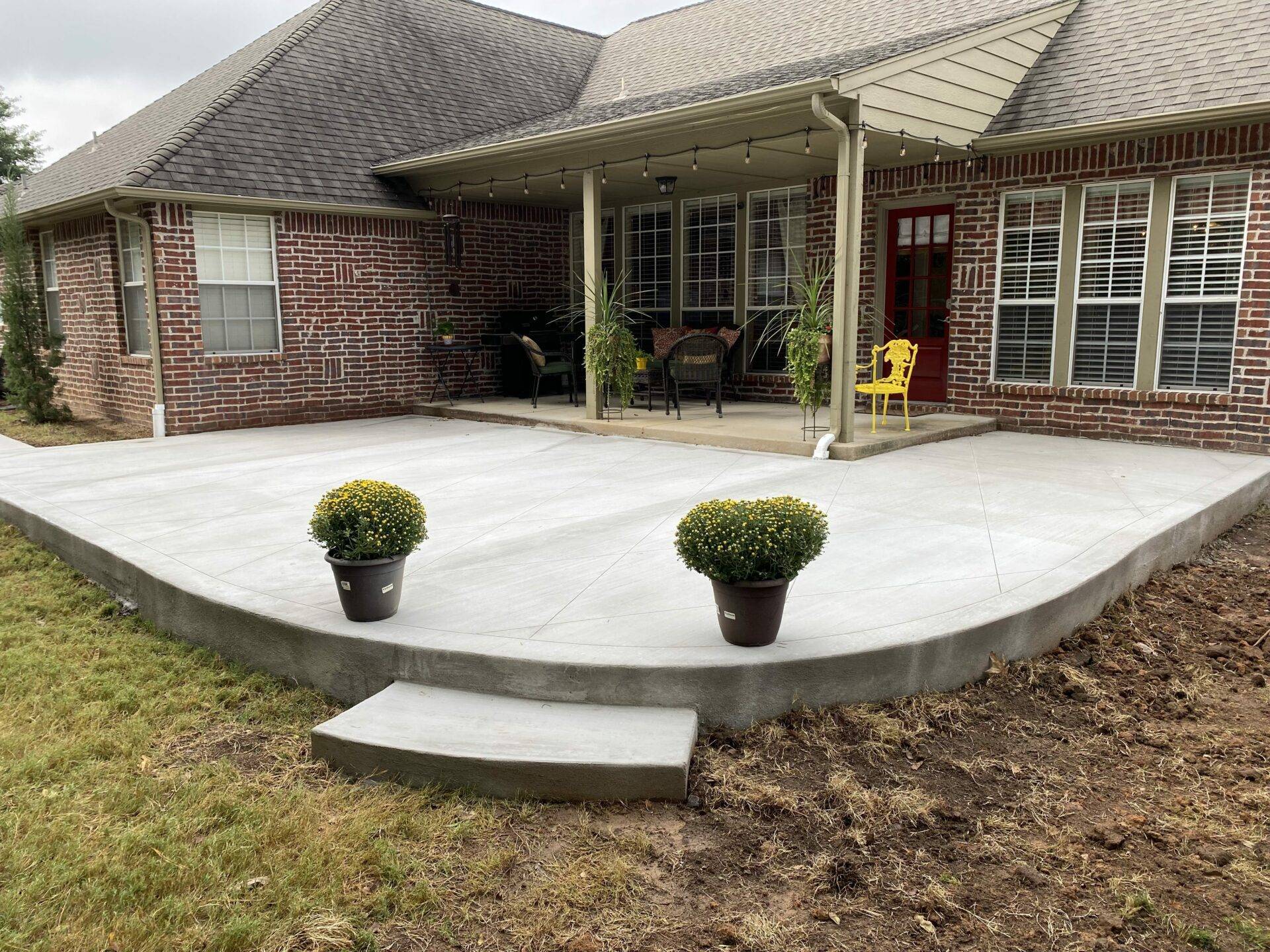
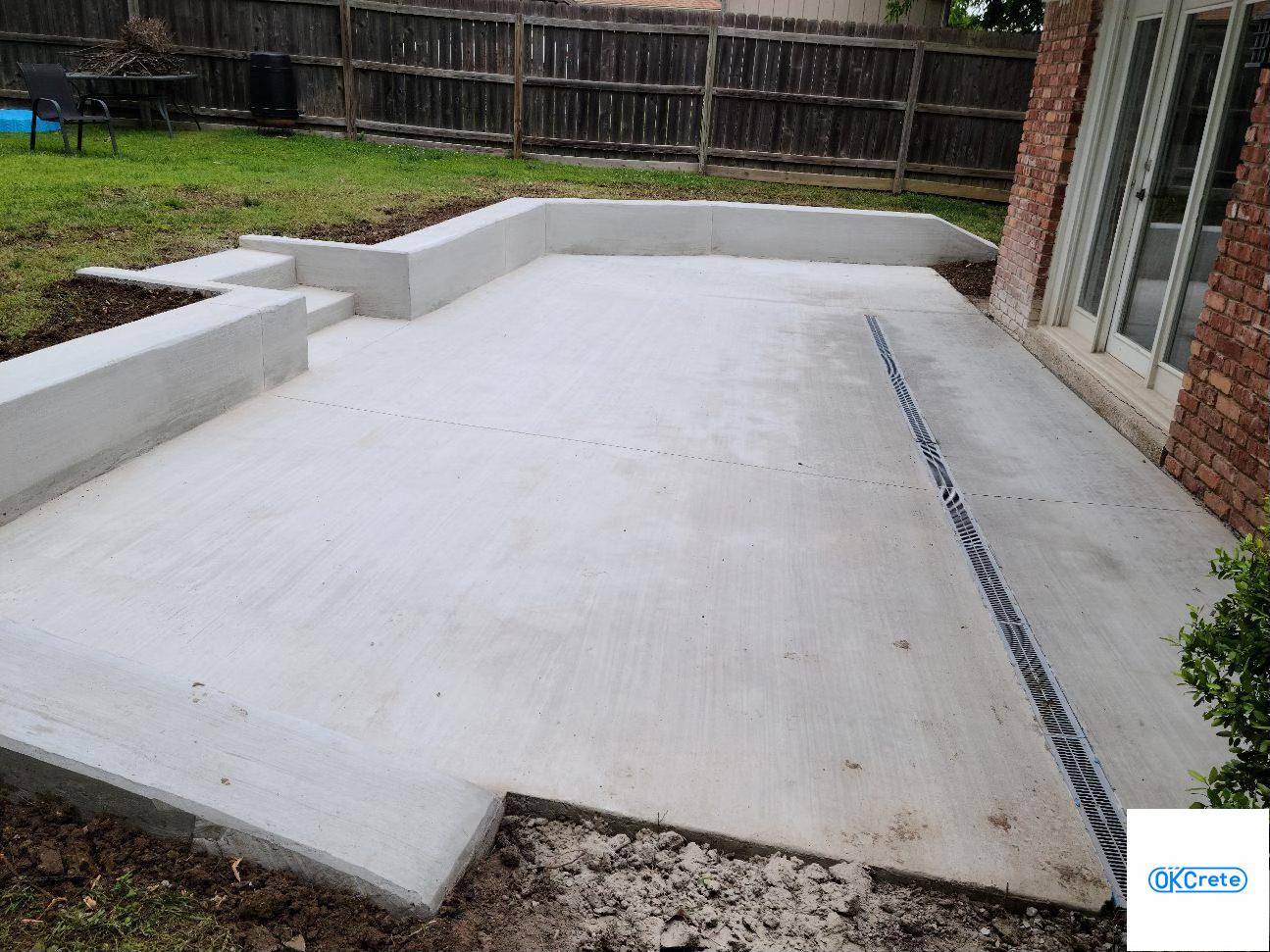
How a French Drain Works: A Complete Guide
The perforated pipe in a French drain is designed to allow water to flow freely, while keeping the gravel in place. The stones act as a filter, keeping the tube clear and preventing soil from entering. French drains will move trapped water to a safe space, away from the risk of damage.
OKCrete will dig the trench so it slopes about one inch every eight feet in the direction you want the water to flow – such as away from your home. Once the trench for the French drain is in place, it will divert water to one of the following places:
- A street
- The sewer
- A dry well
- A drainage ditch
- A low-lying area of your property
OKCrete knows how to properly and accurately install French drains before pouring any concrete. We will ensure that any water surrounding the concrete we install is diverted with French drains to places that will not result in flooding or water damage.
French Drains Ensure Water
Stays Away From Your Home
Pooling surface water and basement or garage flooding represent two critical issues that can arise in the absence of effective drainage solutions. At OKCrete, we understand the paramount importance of proper drainage, and we are committed to meticulous care in preparing our French drains.
Our goal is to ensure that these drains are fully equipped to redirect water away from your home, preventing any accumulation of standing water on the surface.
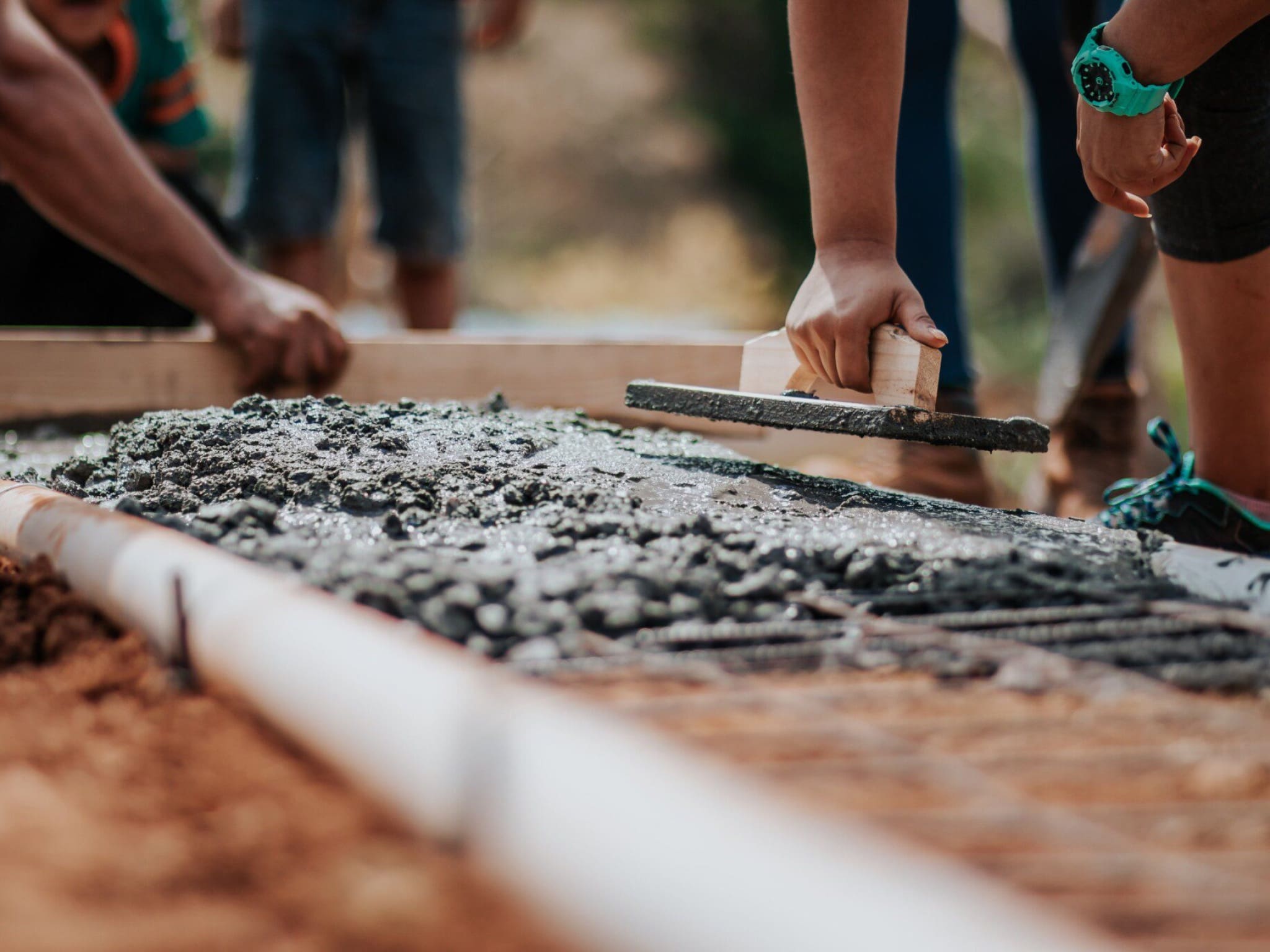
Surface Water
For preventing the buildup of surface water in a specific area of your property, the installation of a French drain stands out as a highly effective solution. This method involves excavating a horizontal trench uphill from the targeted dry area.
Within this trench, a layer of gravel or crushed stones is laid, serving as a conduit to divert water away from the designated location. In regions with trees or shrubs nearby, opting for solid pipe instead of perforated pipe is crucial to minimize the risk of root intrusions, which could potentially lead to pipe blockages.
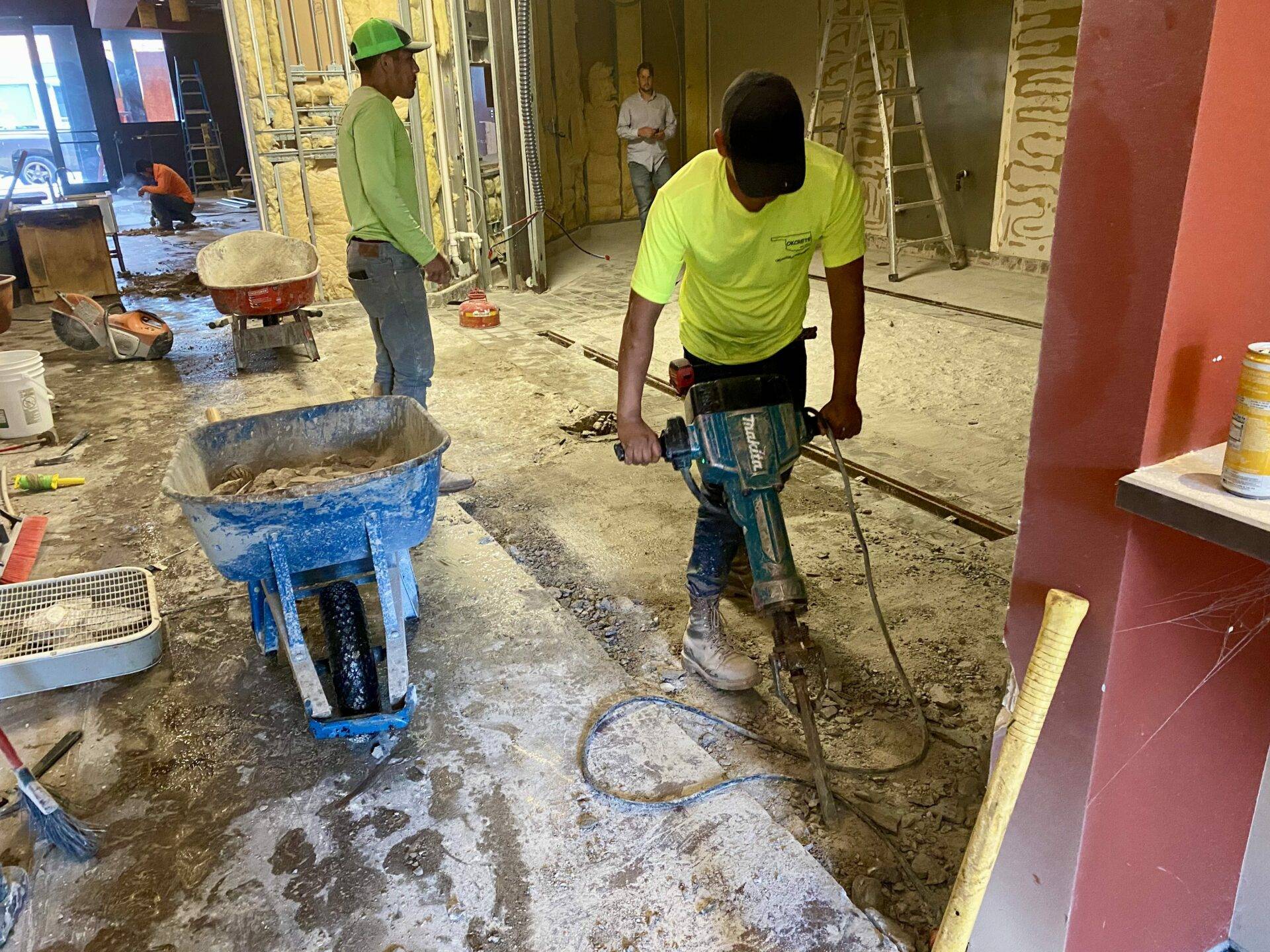
Garage or Basement
French drains represent a highly effective solution for mitigating water-related issues in and around your property, particularly in areas prone to water accumulation such as garages and basements. These drains play a pivotal role in intercepting and redirecting water, acting as a formidable barrier against potential water damage and flooding.
When strategically positioned, French drains intercept water before it has the chance to infiltrate your property, offering a protective shield against the devastating consequences of excess moisture. By diverting rainwater and other sources of surface water away from these vulnerable areas, French drains help maintain the structural integrity of your property while safeguarding valuable possessions stored within. In addition to protecting against flooding, the installation of these drainage systems can also contribute to a healthier and more comfortable living environment by preventing the growth of mold and mildew, which often thrives in damp conditions.
The versatility of French drains make them a versatile choice for property owners seeking reliable water management solutions. Whether you’re dealing with stormwater runoff, groundwater seepage, or a combination of both, a well-designed French drain can be tailored to meet your specific needs, providing long-term peace of mind against the ever-present threat of water accumulation.
Benefits of a French Drain
In addition to diverting water from your home, a French drain has other advantages as well.
French drains are hidden from view and can be placed throughout your yard and landscaping, making them an unobtrusive solution to water issues.
French drains have no moving parts, such as pumps, which means they are very unlikely to break down and need repairs.
French drains can make a significant difference in water issues around your foundation and make your yard a much more usable space.
Get a Free Estimate
Must-Know Facts About French Drains
As stated above, French drains are crucial when it comes to diverting excess water away from the structure of your home and property. However, many homeowners are not aware of them, so we’re here to give you the must-know facts about French drain systems.
Design
A typical French drain consists of a trench filled with gravel or rock and a perforated pipe, often wrapped in filter fabric, which allows water to enter while keeping out soil, loose dirt, etc. The gravel provides a path for water to move freely.
Gravity-Driven
French drains rely on gravity to move water away from problem areas. They should be sloped appropriately to ensure efficient water flow.
Maintenance
Regular maintenance may be required to keep French drains functioning optimally. This can include cleaning out and inspecting the pipe for clogs or damage.
Environmental Considerations
Properly designed French drains can help protect the environment, by reducing surface water runoff that can carry pollutants into natural water bodies.
Other Types of Drainage Systems
In addition to French drains, several other types of drainage systems can be installed to keep the heavy rain/water from causing damage to your property.
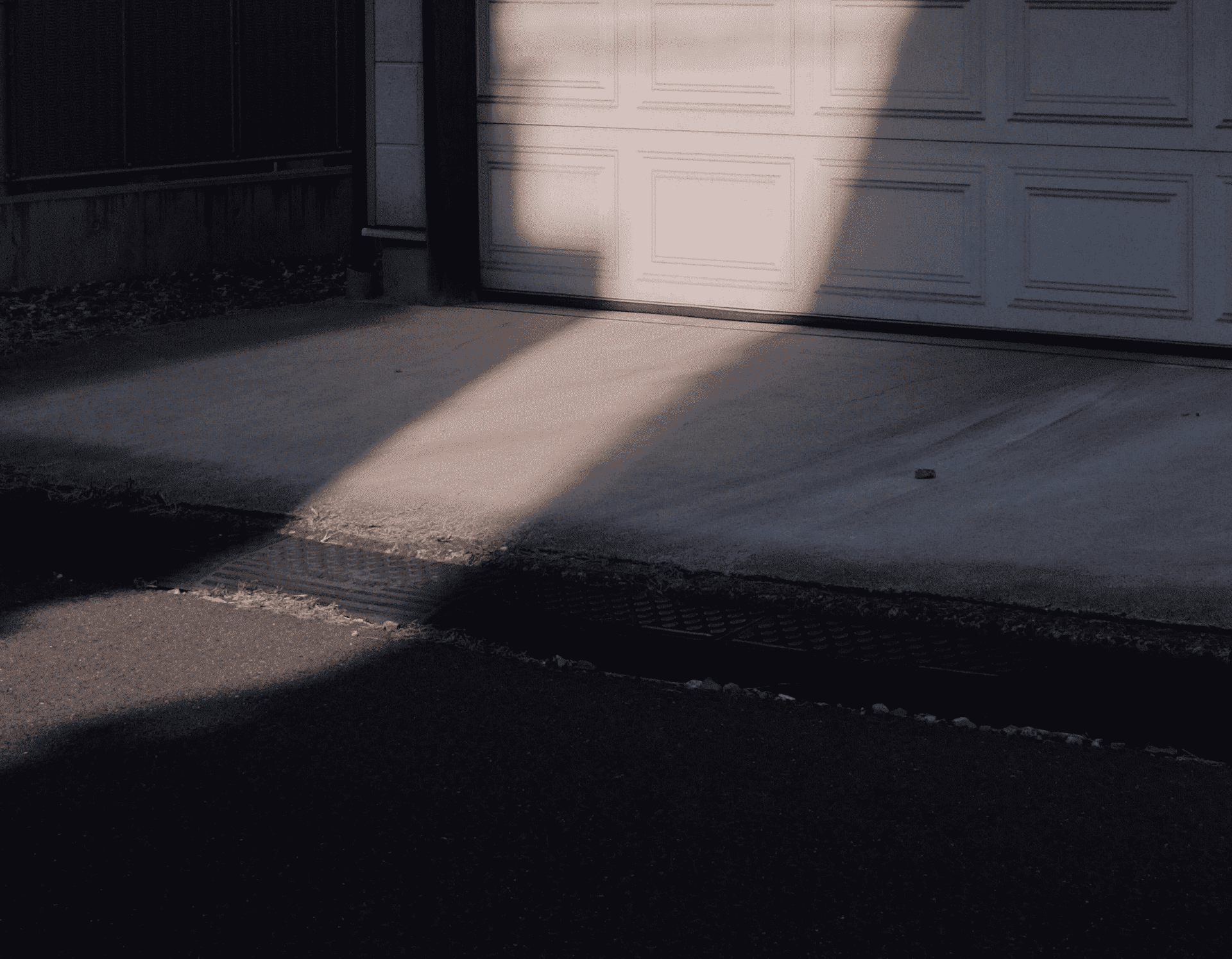
Channel Drain (AKA the Trench Drain)
Channel drains are a common type of driveway drainage system that is used in situations where the driveway slopes down from the street towards the home. This allows for the collected of water flowing down the driveway and helps to ensure that the driveway remains clear and usable.
Channel drains are metal U-shaped channels that are inserted into a trench dug along the driveway. The channel drain is usually completed with a metal driveway drainage grate, preventing debris from blocking the drain and allowing vehicles to drive over it safely.
Permeable Driveway Surfaces
Permeable driveway surfaces are a catch-all term for several options allowing water to pass through the driveway and drain to the ground below. These surfaces can be used in any situation where you want water to be able to drain away from the driveway. This can include driveways that are built from scratch or driveways that are being resurfaced.
There are several different types of permeable surfaces that you can choose from.
- The most common is an open-cell paver, a type of concrete paver with holes that allow water to flow through to the ground below.
- You can also use pervious pavers, where the joints between the pavers are filled with gravel. This allows water to flow around the paver and down to the ground below.
- Another option is a porous paver made from ceramic that absorbs water and draws it down to the ground.
- Finally, you can use gravel, stone, or grass as your permeable surface. In these cases, water can pass freely through and down to the ground below.
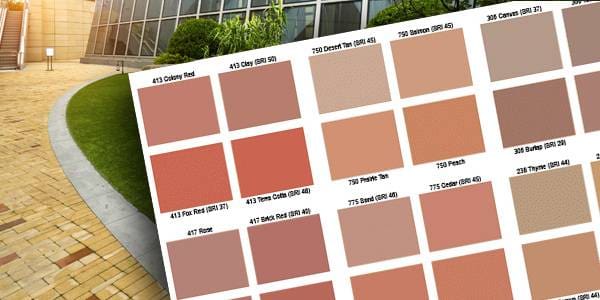
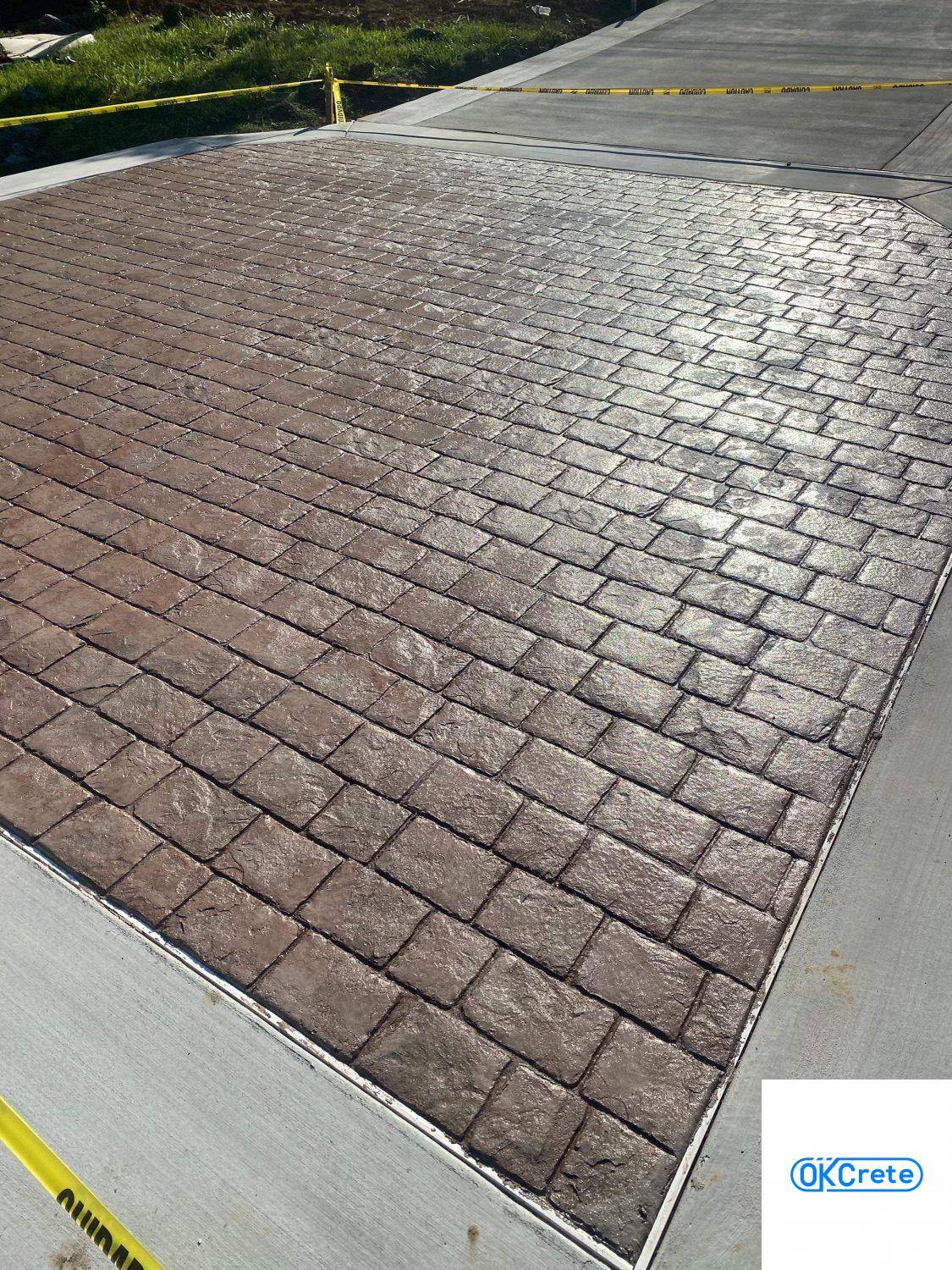
Slope Drainage System
A slope drainage system is a type of drainage system that takes advantage of an already inclined terrain to easily drain the water away from your house. This type of drainage system is usually used in areas with hilly or sloped terrain, as it can be difficult to install a traditional drainage system in these areas.
Pipes are installed in strategic areas, leading to the declined slope. These pipes used can be metal or plastic, but they have to be properly ground to prevent sharp edges and keep them safe.
Pipes are installed in strategic areas, leading to the declined slope. The pipes used can be metal or plastic, but they have to be properly ground to prevent sharp edges and keep them safe.
Eliminate Drainage Problems with OKCrete
OKCrete will take all the necessary precautions to ensure that your concrete is poured correctly and that proper drainage is installed. This includes the installation of French drains, slope drains, and permeable driveway surfaces to divert water away from your house and garage.
With OKCrete’s expertise, you can be sure that your concrete will be properly installed and function as it should, including keeping water away from the vulnerable spots on your property and voiding the formation of massive pools of surface water around the foundation walls your home.
We'll review your request and get back to you right away!
